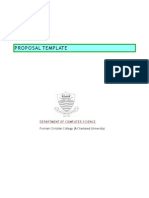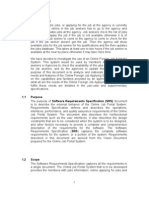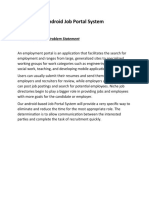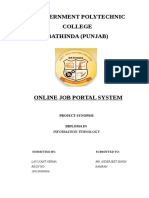0% found this document useful (0 votes)
40 views19 pagesSe Project Documentation
The document describes a proposed online job portal system that would allow job seekers and employers to connect through a mobile application. It outlines the objectives, functional requirements, non-functional requirements, use case diagrams, class diagrams, and activity diagrams for the system.
Uploaded by
Noor ul AinCopyright
© © All Rights Reserved
We take content rights seriously. If you suspect this is your content, claim it here.
Available Formats
Download as DOCX, PDF, TXT or read online on Scribd
0% found this document useful (0 votes)
40 views19 pagesSe Project Documentation
The document describes a proposed online job portal system that would allow job seekers and employers to connect through a mobile application. It outlines the objectives, functional requirements, non-functional requirements, use case diagrams, class diagrams, and activity diagrams for the system.
Uploaded by
Noor ul AinCopyright
© © All Rights Reserved
We take content rights seriously. If you suspect this is your content, claim it here.
Available Formats
Download as DOCX, PDF, TXT or read online on Scribd
/ 19

















































